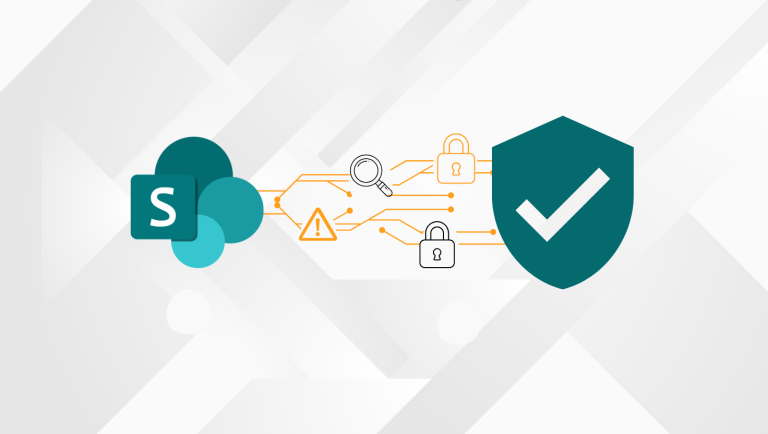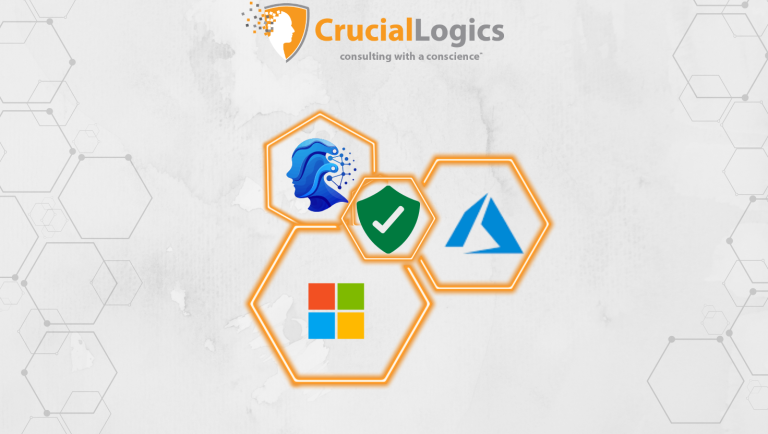Azure migration is the process of moving applications, workloads, and data from on-premise servers or other cloud environments into Microsoft Azure to gain scalability, security, and cost efficiency. Beyond being a cost-effective way to modernize IT, it has also become a strategic approach for enhancing flexibility, improving data security, and unlocking innovation.
For many organizations, the decision to migrate to Azure is more than a technical shift. It reflects a broader need to align IT resources with business needs, reduce costs, and create a foundation for future growth. While reducing capital expenditure is often the initial driver, most businesses quickly discover that the benefits extend far deeper. From stronger security and compliance to global reach and advanced cloud native technologies, Azure provides a platform that supports long-term transformation.
In this guide, we’ll explore why companies are choosing Azure, the different migration scenarios available and best practices to ensure success.
Types of Azure Migration
Organizations take different paths when moving to the Azure platform. The right migration path depends on whether the priority is speed, cost optimization, or long-term modernization. Broadly, there are four recognized ways to migrate to Azure:
- Rehost (Lift-and-shift) – Move on-premise servers and applications to Azure virtual machines with minimal changes.
- Refactor (Repackage) – Make small modifications, often through containers or Azure App Service, to improve performance and efficiency.
- Rearchitect – Redesign applications to take advantage of cloud native technologies such as Azure Functions, Service Fabric, or Kubernetes.
- Rebuild – Recreate applications entirely on the Azure platform for maximum flexibility, advanced analytics, and innovation.
In addition to these methodologies, migration can be categorized by workload type — such as database migration, storage migration, application migration, or file migration. While terms like “storage migration” and “file migration” are sometimes used interchangeably, the underlying goal remains the same: to ensure that critical workloads and data are moved securely, without disruption or loss.
Azure Migration Scenarios
Many organizations adopt a hybrid approach — rehosting some workloads for speed while rearchitecting or rebuilding others to maximize the benefits of cloud migration.
For example, you might need to move a legacy or complex system, where performing a lift-and-shift would be more practical than rearchitecting the entire setup. In other migration scenarios, redesigning the Azure environment with cloud-native technologies like Kubernetes ensures scalability, agility, and a smoother migration process.
Azure Data Migration Tools
It’s a common misconception that moving on-premise resources to Azure is as simple as plugging in a migration tool and letting it run. In reality, effective migration requires planning and the right mix of Azure services tailored to each scenario.
Microsoft provides a range of assessment and migration tools to help organizations migrate to Azure securely and with minimal downtime. Each is designed for specific workloads — whether servers, databases, applications, or storage.
Azure Migrate
Azure Migrate serves as the central hub — sometimes referred to as the Azure Migrate hub — for assessing and moving on-premise servers and workloads into Azure. It supports large-scale lift-and-shift migrations while also providing insights for more complex transitions.
It includes two core functionalities:
1) Azure Migrate: Discovery and Assessment
The discovery and assessment tool scans on-premise resources, such as servers, applications, and databases to build an inventory. It evaluates performance data, dependencies, and compatibility then generates cost estimates for running those workloads in Azure.
Use cases:
- Identifying which applications are cloud-ready and which need re-architecture.
- Mapping interdependencies to avoid breaking links during server migration.
- Running cost simulations for moving databases to Azure.
2) Azure Migrate: Server Migration
Executes the migration of on-premise physical servers and virtual machines into Azure. It supports both agentless and agent-based methods, with options for online (minimal downtime) or offline migrations.
Use cases:
- Lifting and shifting VMware and Hyper-V environments.
- Migrating physical servers without rebuilding.
- Phased migrations for critical workloads to ensure a smooth transition.
Azure data migration services
When migrating databases, Azure provides dedicated functionalities to streamline the process and minimize risk. Two core tools are commonly used: Azure Data Migration Assistant (DMA) and Azure Database Migration Service (DMS).
1) Azure Data Migration Assistant (DMA)
DMA is a lightweight tool designed to assess your on-premise databases before migration. It scans for compatibility issues, feature gaps, and deprecated elements that could cause problems once the database is running on Azure.
Use cases:
- Detecting outdated SQL Server features that need updating before migration.
- Identifying performance-impacting issues such as unsupported data types or functions.
- Providing remediation recommendations to enable teams to address issues proactively.
2) Azure Database Migration Service (DMS)
After assessment, DMS handles the actual migration of databases into Azure. It supports both online and offline migrations, enabling organizations to move workloads with minimal disruption.
Use cases:
- Performing a full database migration from SQL Server, Oracle, MySQL, or PostgreSQL into Azure SQL Database or Managed Instance.
- Running online migrations to cut downtime for mission-critical workloads.
- Supporting large-scale migrations across multiple databases while maintaining schema fidelity and data integrity.
SQL Server Migration Assistant (SSMA)
SSMA is a specialized tool designed for organizations running databases on non-SQL platforms that want to migrate them to Azure Synapse Analytics or SQL Server. It automates much of the conversion process, reducing the effort required to rewrite schemas or reconfigure applications.
Use cases:
- Migrating databases from Oracle, MySQL, DB2, SAP ASE, or Access into Azure SQL or SQL Server.
- Converting database schemas, objects, and stored procedures to be compatible with Azure’s SQL environment.
- Performing large-scale migrations where manual conversion would be too time-consuming or error prone.
- Enabling organizations to consolidate diverse database environments into a single Azure-based data platform for easier management and advanced analytics.
Azure Synapse Pathway
Azure Synapse Pathway is a tool that simplifies the process of moving from legacy data warehouses to Azure Synapse Analytics. Instead of manually rewriting complex SQL code, Pathway automates much of the translation, significantly accelerating migration timelines.
Use cases:
- Converting T-SQL or SQL dialects from platforms like Teradata, Netezza, Snowflake, or Amazon Redshift into Synapse-compatible code.
- Reducing the manual effort and risk associated with re-coding stored procedures, scripts, and queries during migration.
- Helping organizations modernize their analytics environment by moving from traditional on-premise warehouses to Azure Synapse, where they can take advantage of cloud-scale performance and integration with tools like Power BI and Microsoft Fabric.
- Enabling IT teams to validate translated code more quickly, so projects move from testing into production with less downtime.
Azure Backup
Azure Backup protects on-premise resources and Azure workloads during and after the migration process. It ensures data security by safeguarding against accidental deletion, corruption, or ransomware. It integrates with Azure Site Recovery to provide a comprehensive disaster recovery solution.
Use cases:
- Pre-migration safety net for on-premise servers.
- Protecting virtual machines and databases during migration.
- Long-term backup with flexible retention policies.
- Safeguarding critical workloads against ransomware and application downtime.
Steps to Migrating to Azure
A successful migration to Azure follows a structured process that balances strategy, planning, and execution.
1) Define strategy and goals
Most organizations migrate to Azure to modernize IT infrastructure, reduce costs, improve performance, or enhance scalability. The first step is to define a clear plan and the objective behind every step.
Are you aiming to improve application performance, strengthen security, or drive broader IT modernization? Your objectives will ultimately determine the migration methodology and guide every decision that follows.
2) Assess existing infrastructure
The next step is to assess your current environment by creating an inventory of servers, databases, storage, and applications.
Tools like Microsoft Azure Migrate can consolidate this information into a single view, helping you understand workload dependencies, evaluate cloud readiness, and generate cost estimates for running those workloads in Azure.
3) Plan and design
With a clear understanding of your environment, the next step is to design the migration roadmap. This includes selecting the appropriate Azure migration services, defining the approach you’ll take, and establishing a realistic timeline. At this stage, you should also design the target cloud architecture that covers security, networking, governance, and regulatory compliance.
4) Prepare your Azure environment
Prepare your Azure environment to receive workloads by configuring resource groups, virtual networks, and securing access with identity controls. Ensure proper governance is in place from the start.
5) Actual migration
Migrating to Azure is not as easy as it may seem. Rather than plugging your tool and leaving it on autopilot, work with an Azure migration consultant to help you map every step of the migration process and achieve the best result without disruption.
At CrucialLogics, we believe security should be simple, manageable, and scalable. We secure businesses using the Microsoft technologies they already own, and Azure is a core area of our expertise.
Conclusion
As your business grows, migrating workloads to Azure becomes a necessity. Azure migration services make this possible through discovery, assessment, sizing, replication, and migration tools.
At CrucialLogics, migration to Azure is part of our commitment to securing businesses with native Microsoft solutions. For a consultation on migrating your workloads to Azure, speak with us today.






